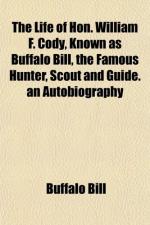|
This section contains 652 words (approx. 3 pages at 300 words per page) |

|
The battle was short, but decisive. The several dozen cavalrymen, each dressed in standard U.S. Army gear and carrying appropriate weapons, were soon surrounded by a sea of Sioux Indians. The sound of gunshots pierced the night. Horses whinnied in alarm. The air filled with dust and blue smoke from the firearms. One by one, men slid off their mounts, fatally injured. Some were Indians, but most were white soldiers. Before long there were only a few U.S. cavalrymen left. The Sioux closed in, yelling and whooping, to finish them off. The last to die was the general, George Armstrong Custer, easily identifiable by his uniform and his long yellow hair.
The scene quieted. The Indians wheeled their horses around and rode away. The dust cleared, revealing unmoving bodies where the men had fallen. The smoke drifted away. There was silence.
Then...
|
This section contains 652 words (approx. 3 pages at 300 words per page) |

|



